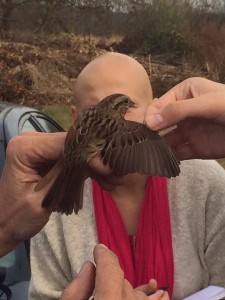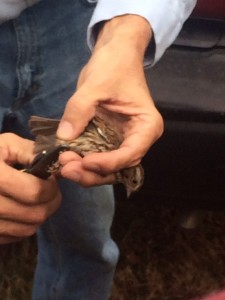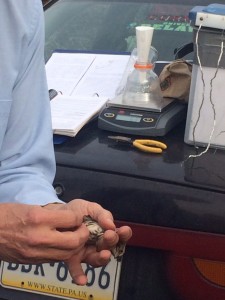This is a film that I first saw in Andy’s Environment and Film class last year. It left a very lasting impression on me, especially as an EVST student. This film has no dialogue but it doesn’t need it. The way the information is conveyed is very different, using time-lapse and slow motion, but the message is even stronger. The beginning of the film is just of nature (i.e the ocean, wildlife, etc), then it shows images of human’s impact on the land. Towards the end we see city life and people in the city. The last scene brought me to tears, and I hope you get the chance to see the entire film at some point because it can be an enlightening, angering, and enjoyable film all at the same time.
Category Archives: Uncategorized
Darkened Cities
Our discussion of the night sky in class today made me think of a photography exhibit from Thierry Cohen that a friend showed me last year. It is a photo series that imagines cities from around the world without any streetlights, under the night sky. The artist visited nine cities and took photos of them during the day. He then visited spots on the same longitude that had little to no light pollution and took photos of the night sky. For instance, the skies above Shanghai are actually in Western Sahara and Paris is illuminated by the stars over Montana at locations on the same longitude. Here are a few of the striking images, let me know what you think!
A Note From the Bat Study
Anthropocentric spread of invasive pathogens in wildlife and domestic animal populations, so-called pathogen pollution, poses substantial threats to biodiversity and ecosystem integrity and is of major concern in conservation efforts (Winifred F. Frick et al. 679).
This statement from the introduction of the bat article truly resonates with me because I recently researched amphibians of the tropical Andes, which has the most amphibians in the world of any biodiversity hotspot and the main cause of there extinction is human introduced pathogens and viruses. Additionally, they are also being effected by anthropocentric climate change another human induced problem that may extinct 70-80% of all amphibian species within the next 50 years. The real questions now is can they be conserved because human interference in these hotspot areas is only increasing and climate change seems to have only begun rearing its true face.
Dillard’s Northing Chapter/Walden’s Spring
Last class we discussed the sandhill crane because of its long history, so during the Dillard reading I was happy to see a section on monarch butterflies. Their history is noted in this quote from Pilgrim at Tinker Creek: “Each successive swarm repeats this mysterious dogleg movement, year after year. Entomologists actually think that the butterflies might be “remembering” the position of a long-gone, looming glacier.” (258)
I am convinced that butterflies, let alone most species, can see and feel a history that we cannot. The monarchs and cranes could easily achieve a Story of Place assignment.
The pond metaphors-too great to note all (seasons, man, gun firer), but here is a passage that I enjoyed from Spring in Walden: “The pond began to boom about an hour after sunrise, when it felt the influence of the sun’s rays slanted upon it from over the hills; it stretched itself and yawned like a waking man with a gradually increasing tumult, which was kept up three or four hours.” (326)
“A man said to the universe…”
A man said to the universe:
“Sir I exist!”
“However,” replied the universe,
“The fact has not created in me
A sense of obligation.”
–Stephen Crane, 1899
The End of Night
Interview with Paul Bogard, author of The End of Night: Searching for Natural Darkness in an Age of Artificial Light:
http://v-e-n-u-e.com/In-Search-of-Darkness-An-Interview-with-Paul-Bogard
A Change Is Gonna Come
http://www.nytimes.com/2015/11/06/science/exxon-mobil-under-investigation-in-new-york-over-climate-statements.html
News out of New York: State Attorney General Eric T. Schneiderman has issued a subpoena to Exxon Mobil in regards to an investigation as to whether or not the energy giant lied to both investors and the public at large regarding climate change.
This signals a massive shift in public policy towards the energy giants, as in the recent past, favorable outcomes for fossil fuel oriented businesses have been rendered in lawsuits, criminal proceedings, and even with politicians at large. Just recently, in my home state of New Jersey, Governor Christie has used a settlement met with Exxon (roughly around 225$ million dollars) as a boasting point on the campaign trail; but, as many scientific and environmental scholars can attest to, this was actually a concession to Exxon, and not nearly the win that it has made it out to be by the Christie camp.
These small steps, a subpoena and court proceedings, are the first steps towards changing the public perception of climate change. It is no advertised fact that many of the companies who rely heavily on fossil fuels saw their research and development numbers equate to 90% of funding towards fossil fuels, and 10% towards investment in new renewable energy methods. A step in the right direction for the government indeed.
Pathogen Pollution
The article about the White Nose Syndrome (WNS) brings up a good point about the introduction of diseases via human trade or travel from Europe. The bats are dying from the WNS disease that compromises their ability to store fat during hibernation seasons. This disease did not originate in the US, but is having a huge effect on bats in North America.
In class we have talked a lot about invasive plants, but not as much on invasive diseases. Ever since settlers came to the Americas they have brought diseases with them such as small pox. These diseases were deadly to the Native Americans who had no ability to fight off these infectious diseases because their immune systems had never been exposed to these kinds of pathogens.
International trade has always been seen as a good thing between friendly nations, but it can have deadly consequences. When things are shipped to the US or other countries, they not only bring their goods, but also their diseases, insects, and seeds.
This video gives a pretty good synopsis on the impact of invasive species if you’re not as familiar on the subject. It also talks about what implications climate change will have on invasive species, check it out!
Pretty Gross, Eh?
In 2015, it’s hard to imagine that a fully developed city in North America would be willing to dump billions of gallons of untreated sewage into their waters. Well… it’s happening. Starting on Wednesday, the Canadian city of Montreal will begin releasing nearly 2.1 billion gallons of raw sewage into the St. Lawrence River. City officials claim that there is no alternative in the matter, as the sewage must be released in order to complete construction of a new highway for the city.
Although I have no engineering background and little information on this story, I wonder if there truly were no alternatives to this situation? It will be interesting, and probably unsettling to see what the environmental impacts of this decision will be.
http://www.wsj.com/articles/montreal-sewage-dump-to-begin-wednesday-1447182904
Inspiring Bird Banding
As Jeremy mentioned in class today, last week in conservation biology for lab we went to Jacobsburg state park and witnessed bird banding. The activity was very interesting and surprisingly simple. Brad, the man running the lab, set up 3 special nets for catching birds and then we waited. Over the course of 3 hours, 6 birds were caught, examined, banded, and released. The process itself and the Brad knowledge about the birds was interesting, but what truly impacted me about the lab was the amount of time and effort Brad spent birdbanding in his normal life. He had a full time job working in the easton area but also spent time every weekend banding birds. Brad found something he was passionate about and has devoted time, money, and energy into that passion. If more passion can be generated about nature maybe more will follow in Brad’s footsteps. 







